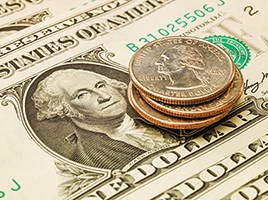By Kevin Theissen
Earlier this month, the Federal Reserve increased interest rates for the first time since December 2018 by 0.25%. Several more hikes are expected later this year. Fed chair Jerome Powell emphasized that he wants to see the month-over-month inflation numbers come down and its latest projections indicate it may move rates above 2.4% by next year. At these rates, which would remain below inflation, the question arises as to their effectiveness to bring inflation down.
Investors need to remember that Fed rate hikes usually occur near the middle of the economic cycle, which means there are potentially years left of gains in stocks and the economy. Historical data shows that market returns have been relatively strong a year after the first hike in a cycle, with an average return of 9.2% and markets that are higher a year later.
The bottom line is rate hikes usually aren’t in and of themselves immediately bearish events, and many don’t expect the early part of this cycle to be any different. For the short term, the top news continues to be Ukraine and related inflation issues, which, until resolved, can alter any economic or market predictions. The long term should still be focused on inflation and interest rates, as those things will be driving earnings which will eventually drive the markets.
Kevin Theissen is the owner and principal of HWC Financial in Ludlow.




